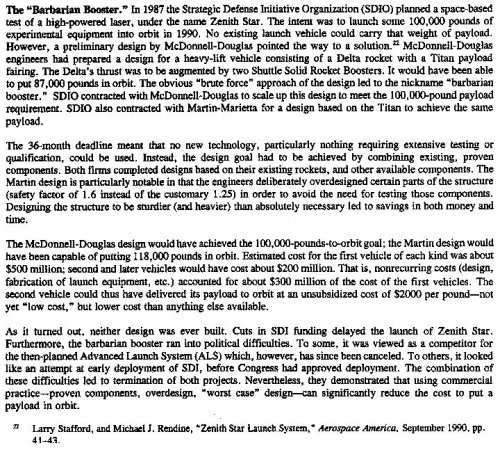Zenith Star Launch System
Stafford, Larry;
Rendine, Michael J. Aerospace America (ISSN 0740-722X), vol. 28, Sept. 1990, p. 40-43. <blockquote>The Zenith Star Launch System (ZSLS) will be used by the SDIO to loft the Alpha Laser and its Large Adaptive Mirror system to orbit. ZSLS performance requirements were rendered especially severe by the weights of these systems, which involved not only the 40,000 lbs of the laser and 15,000 lbs of the mirror, but the weight of laser fuel, laser coolant, beam-control system, target acquisition system, and laser pointing/tracking system. The Titan IV launch vehicle could not have lifted more than 40,000 lbs to LEO. The requisite 100,000 lbs will instead be boosted by a composite launch vehicle consisting of three Shuttle SRBs surrounding a cluster of six Delta II liquid-propellant first stages, and an air-started Delta II first stage. The payload fits within a Titan IV fairing. </blockquote> Keywords: HIGH POWER LASERS, LARGE SPACE STRUCTURES, LAUNCH VEHICLES, SPACEBORNE LASERS, LIQUID PROPELLANT ROCKET ENGINES, MIRRORS, PAYLOADS, SPACE SHUTTLE BOOSTERS


